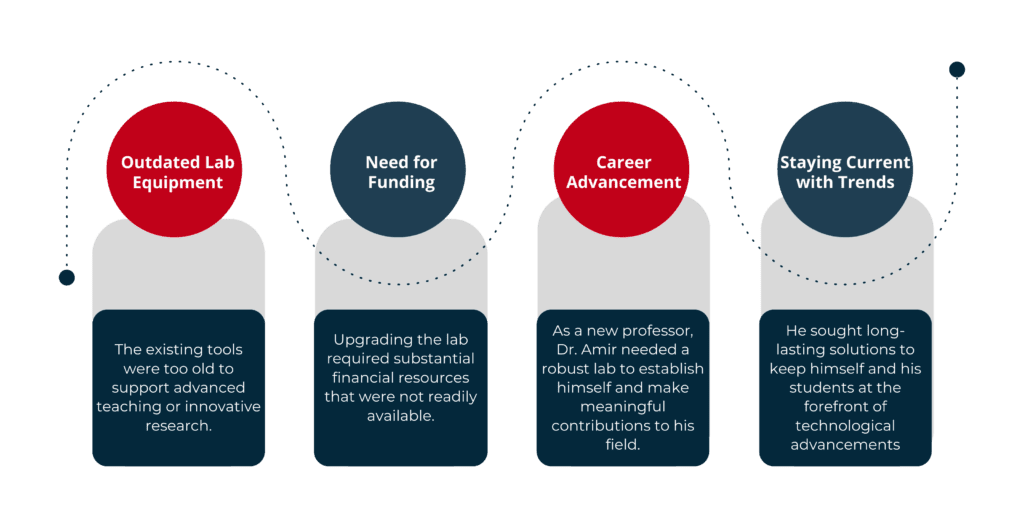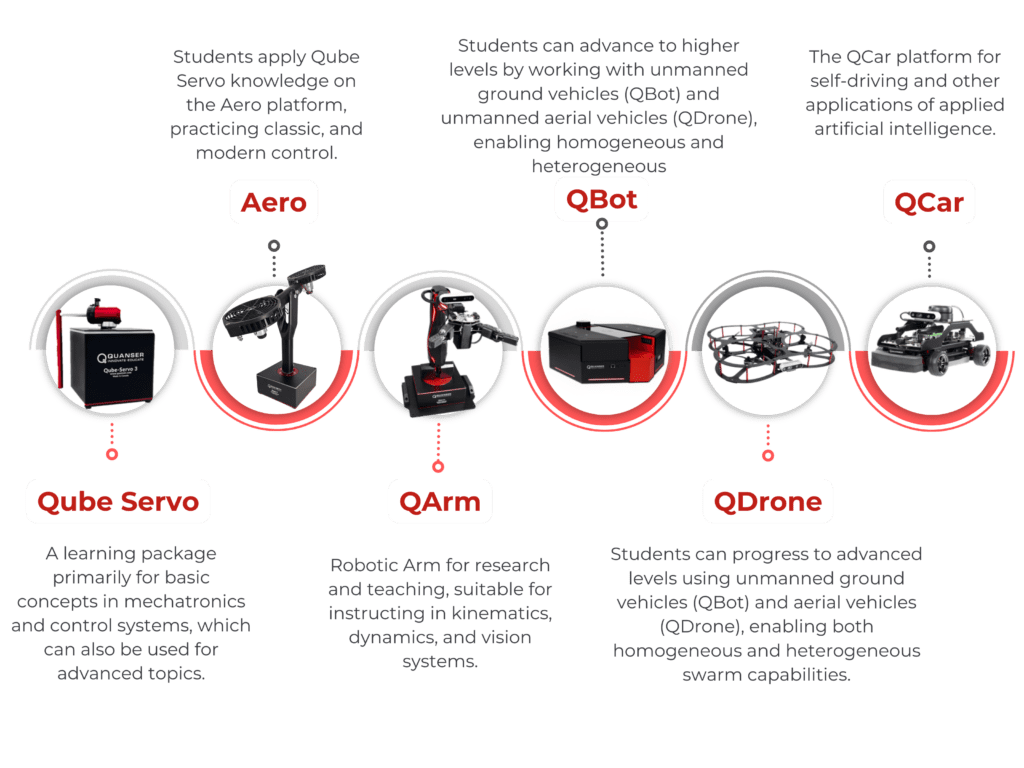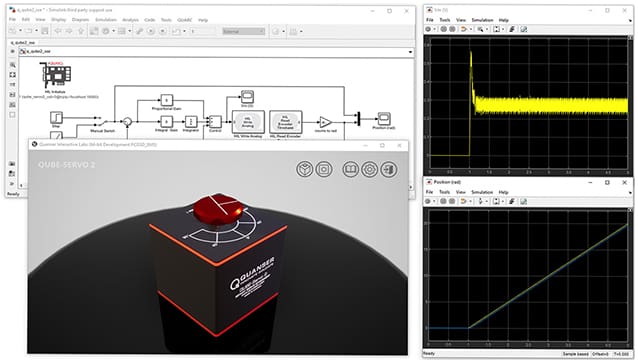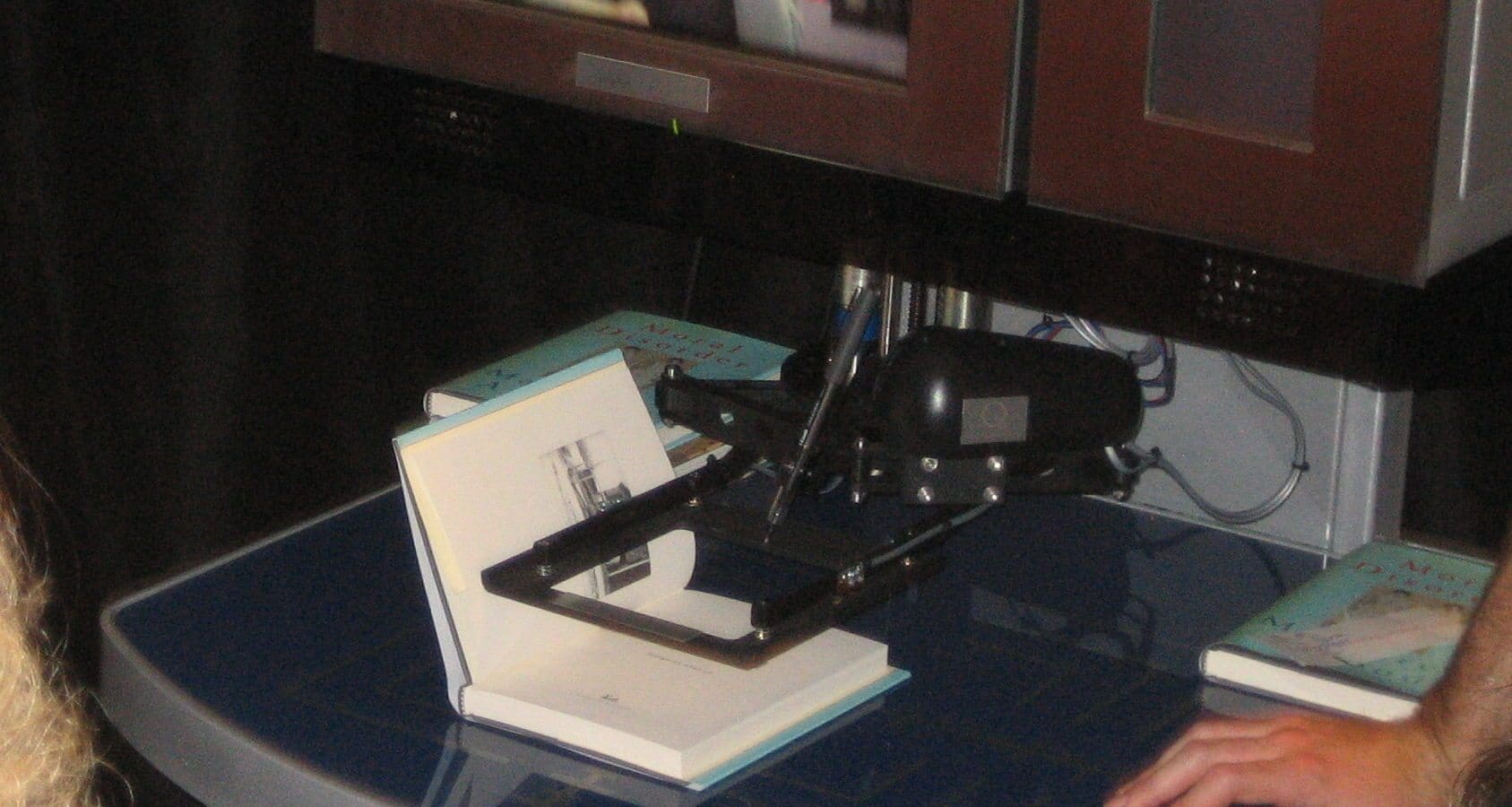
Establishing a modern and versatile lab platform is a significant challenge for many early-career professors in engineering programs. They need infrastructure that not only meets diverse teaching and research requirements but also stays relevant as technology evolves
However, finding a lab solution that addresses all academic requirements is difficult, if not impossible. Early-career faculty often face the additional hurdle of limited funding, making it hard to afford state-of-the-art equipment without securing grants.

Let’s join me along this case and see his strategic approach to establish a lab and build a community around that.
Challenge
When Dr. Amir Shahirinia began his teaching career at the University of the District of Columbia, he faced a significant challenge. His engineering lab was equipped with outdated tools that couldn’t support modern education. During a multi-program control course, he discovered some old Quanser devices stored away in the lab. Determined to make the most of them, he reached out to Quanser for updated information and content.
This initial contact marked the beginning of a valuable partnership. A colleague at Quanser introduced Dr. Shahirinia to the latest lab solutions, helping him envision how advanced technology could transform his lab into a state-of-the-art ecosystem. With these tools, he aimed to enhance both his teaching and research, providing students with hands-on experience using cutting-edge equipment. As an early-career professor, this upgrade was essential for jumpstarting his academic career.
However, there was a hurdle: upgrading a lab is expensive. He needed funding to make this transformation possible. He also understood that without a modern lab, securing grants and staying competitive in his field would be challenging.
Dr. Shahirinia’s challenges can be categorized as follows: 
“ Upgrading our lab with Quanser’s solutions was a pivotal turning point. It provided us with the modern infrastructure we needed to advance our teaching and research, and to make our grant proposals stand out. “ Says Dr. Amir Shahirinia.
Solution
To overcome these challenges, Dr. Shahirinia partnered with Quanser, whose support was crucial throughout the grant application process.
Grant Support
“From the beginning, I valued Quanser’s dedication to their customers. Their versatile solutions, designed for teaching, research, outreach, and project-based learning, were crucial in applying for a grant. Quanser significantly strengthened our grant application, which received many positive comments from reviewers. Quanser’s products are highly adaptable, making them suitable for both specific and general grants. Their customizable and versatile nature allowed us to cover many topics and domains with a single solution, making the grant proposals more attractive.” says Dr. Amir Shahirinia.
Quanser’s team played a vital role in developing the proposal by identifying relevant domains, products, and applications across all academic levels. “Their experts worked closely with us to create strong and compelling grant proposals. Quanser was amazing in demonstrating how their solutions could meet specific research goals and grant requirements, providing valuable data and insights to enhance the proposals. “Dr. Shahirinia adds.
This collaborative framework for supporting grant proposals was offered by Quanser as part of our comprehensive service, even before Dr. Shahirinia became a customer. This partnership helped him secure the “Acquisition of Advanced Robotics and Autonomous Vehicle Technology (ARAVT) for Research in Smart Grid Systems, Teaching, and K-12 Outreach at the University of the District of Columbia” from the Department of Defense (DoD), awarded $391,796 USD.

With this grant, Dr. Shahirinia was able to establish the Smart Grids & Artificial Intelligence (SGAI) lab, fully equipped with Quanser’s advanced technology. The lab features a Self-Driving Car Studio (SDCS) with 10 QCar units, an Autonomous Vehicle Research Studio (AVRS) with 10 QDrone and 10 QBot units, along with 10 QArm robotic arms, 10 Aero, and 10 Qube Servo systems. This setup modernizes the lab and provides a versatile platform, supporting both current and future research and education needs across multiple disciplines
Solution Impact on Teaching and Research
Dr. Shahirinia integrates Quanser products across both undergraduate and graduate courses, significantly enhancing teaching and research outcomes. “In undergraduate courses like Control Systems and Power Electronics, students use Qube Servo systems for hands-on experiments. At the graduate level, courses such as Fundamentals of Power Electronics for Energy Systems and AI Applications in Smart Grids utilize Quanser’s studios, including SDCS and AVRS platforms, for advanced projects and research. With versatile, software-agnostic solutions, Quanser allows students to work across platforms like MATLAB, Python, and ROS, keeping them aligned with industry trends.”
Below, you can see the progression Dr. Shahirinia has outlined for the lab.

Dr. Shahirinia also values Quanser products for their data-gathering capabilities, sensor quality, and powerful computational features, adding, “These characteristics make Quanser products ideal for autonomous systems and applied AI applications.”
Result
The collaboration with Quanser played a pivotal role not only in establishing the Smart Grids & Artificial Intelligence (SGAI) lab but also in driving its success. This partnership has led to securing significant grants, expanding academic and industry connections, and enhancing community outreach efforts.
Grant Acquisition
- Accelerate Ongoing Grant Proposals: The lab’s advanced capabilities have greatly strengthened its grant applications, resulting in several ongoing proposals. Collaborating with researchers from various institutions, including the University of Maryland, the lab is close to securing a $6 million grant.
- Expanding Research Horizon: The lab has expanded its research activities by submitting proposals to agencies such as the Nuclear Regulatory Commission and the Department of Energy.
Growth in Collaboration and Outreach
- Interdisciplinary Research: The SGAI lab has evolved into a collaborative research hub, attracting teams from different departments and universities. It fosters a multidisciplinary environment where faculty from engineering, computer science, and biomedical fields work together.
- Academic Collaborations: Collaborations with institutions like the University of Maryland have opened new research opportunities, significantly boosting the lab’s academic influence.
- Industry and Government Connections: Monthly visits from industry partners and government agencies have established long-term relationships, offering students internships and job opportunities, while benefiting both the department and the industry.
Community Engagement
- K-12 Outreach: The lab engages with eight schools annually, inspiring the next generation of students to pursue STEM careers.
- Recruitment Programs: The lab also collaborates with two colleges each year to host events, which have successfully increased enrollment in engineering programs.
“The SGAI lab has become a magnet for collaboration, opening doors we never thought possible,” says Dr. Shahirinia.

Summary of the Results
Conclusion
Dr. Amir Shahirinia’s journey illustrates the transformative impact of integrating Quanser’s complete lab solution. By adopting Quanser’s full suite of technologies under one roof, he developed an advanced platform that supports multiple disciplines and spans across levels from undergraduate to graduate studies. It also streamlined his grant proposal process, leading to higher success rates.
If you’re looking to build a cutting-edge lab or renew your lab for robotics and applied AI that supports teaching, research, project-based learning across multiple levels, and outreach, feel free to reach out to Amir Pasha Javid, Director of Research Partnerships at Quanser, at amirpasha.javid@quanser.com for consultation and support with grant applications.


